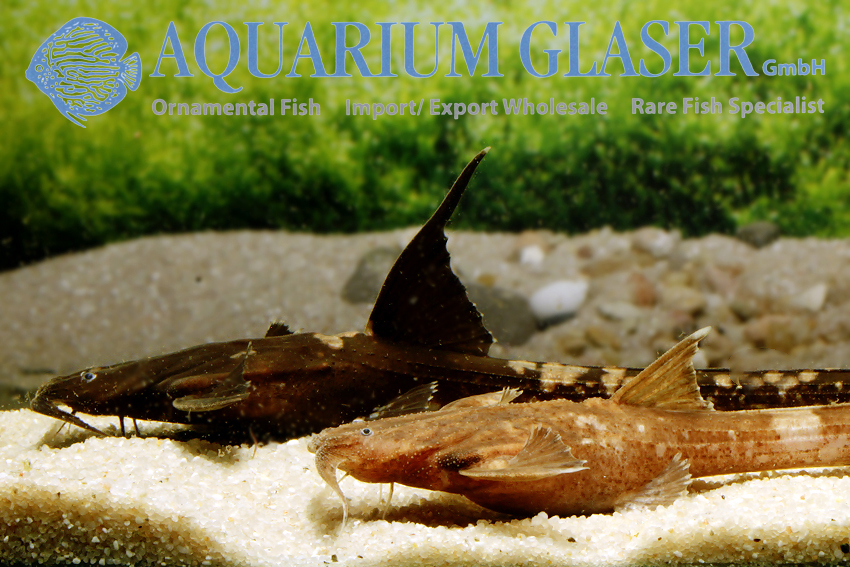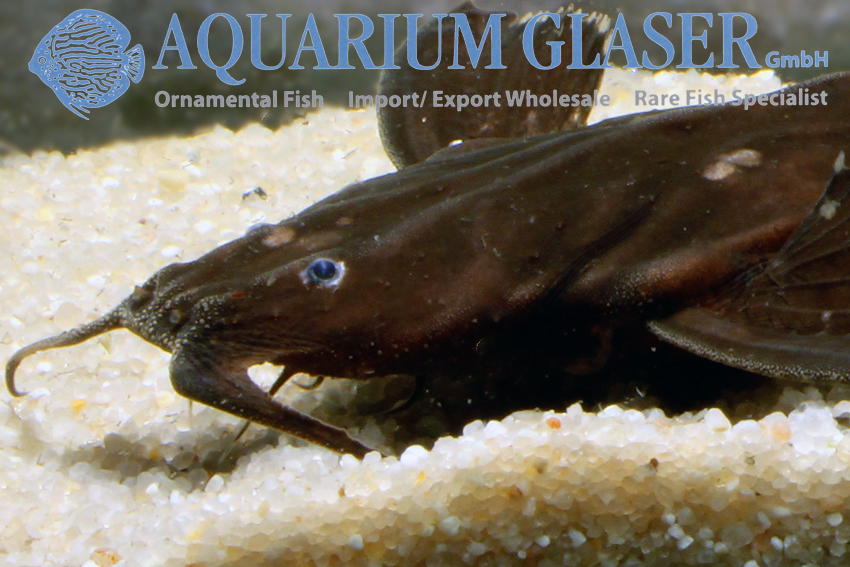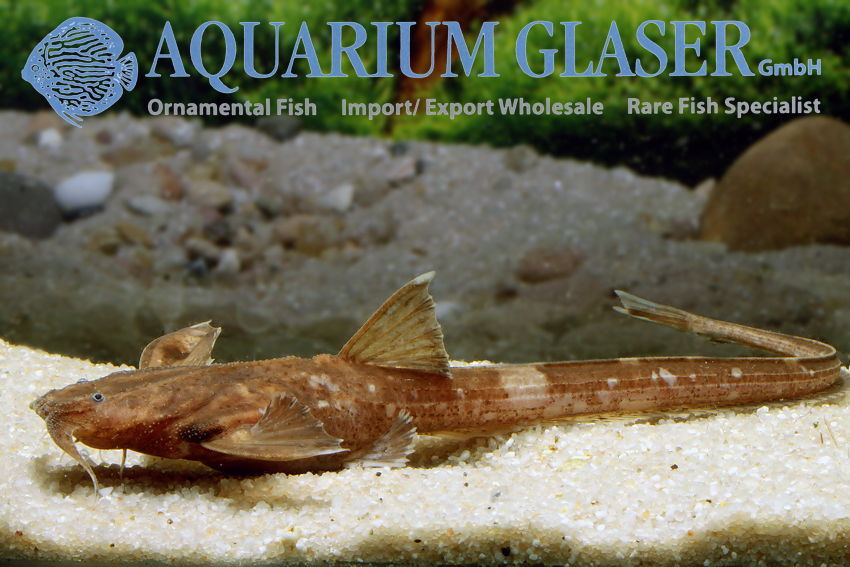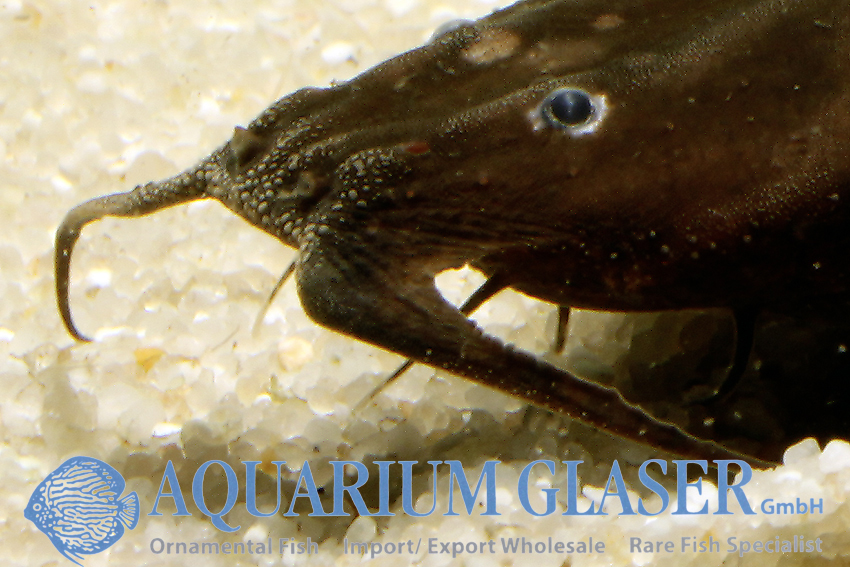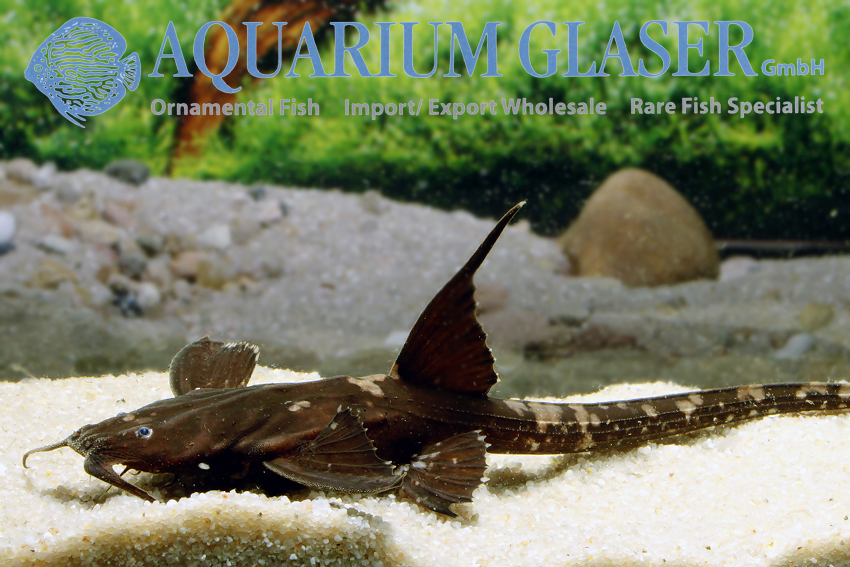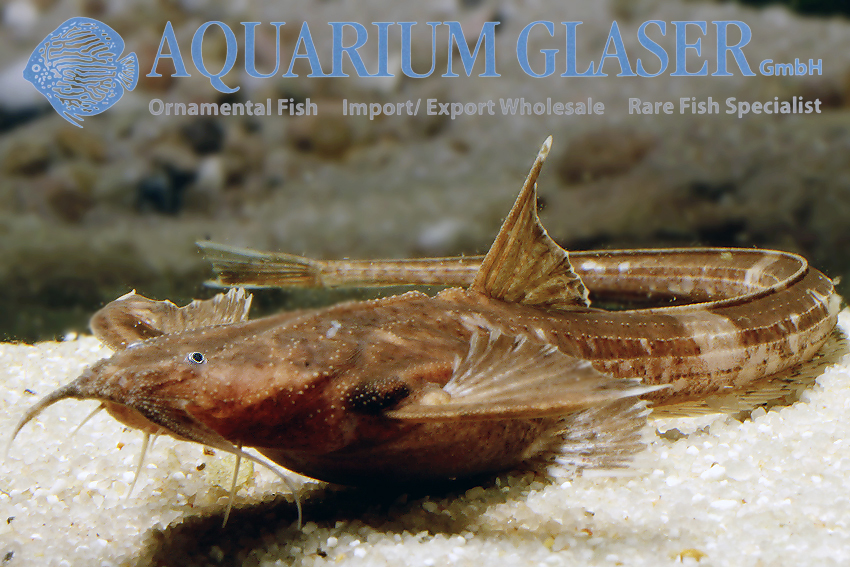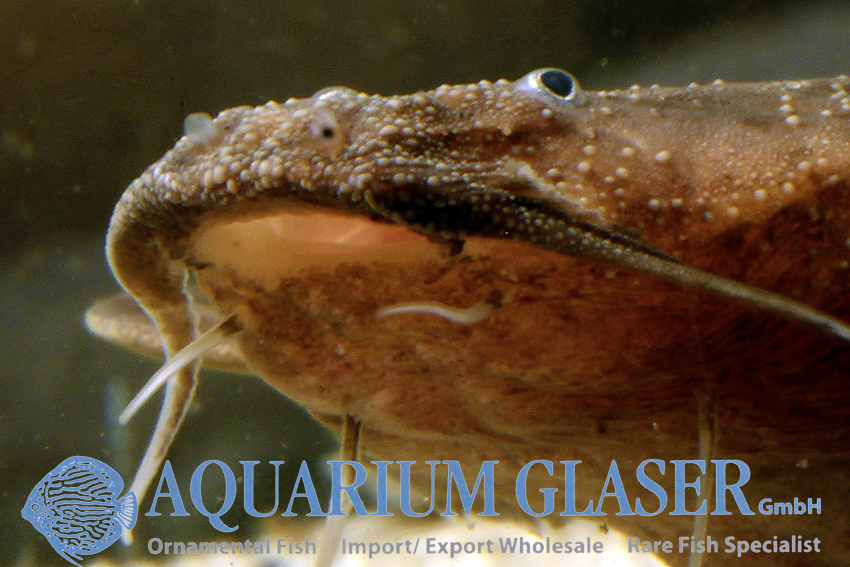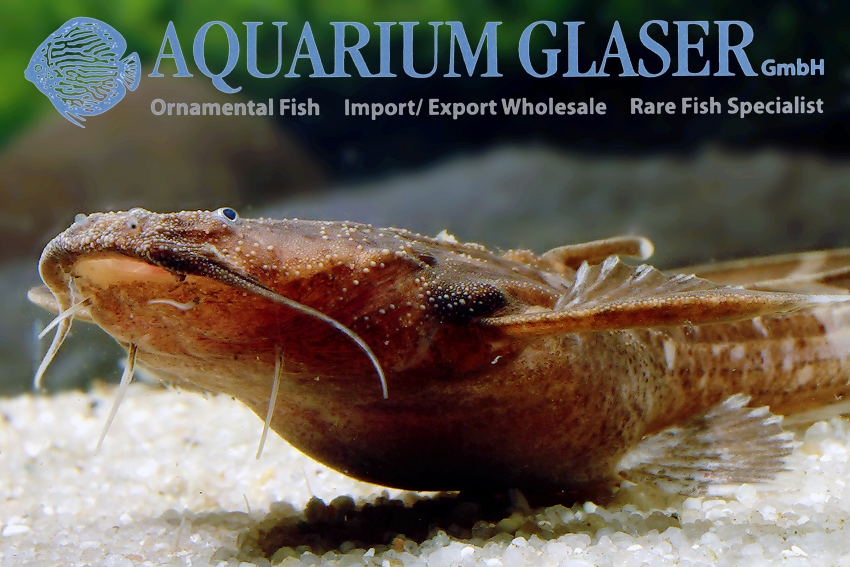We received this beautiful banjo cat from Brazil currently. The species represents by far the most desirable member of the family. The fish becomes approximately 30 cm long and thus should be kept in larger tanks. In contrast to most other banjo catfishes – which usually do not move if possible – this species is comparetively lively.
Platystacus cotylephorus inhabits the lower reaches of rivers and even tolerates brackish water. It can be kept, however, also in pure freshwater, but the pH should be neutral or slightly alcalic in that case and the water should be medium hard, not soft.
Basically speaking the species is very peaceful, although very small tank inhabitants may be eaten. The banjo cats accept readily any type of frozen food, most do even feed on granulated dry food; Tubifex are regarded as an delicatecy.
One of the characteristic features of the species is the fact that there do not exist even two specimens with exactly the same coloration. There are no differences between the sexes known for sure, but it is said that females have a rather brown basic coloration while males have a black one. In our fish quite different shapes of the dorsal fin can also be observed which possibly proof to be a way for sexing the fish.
Although the species has not been bred successfully in aquaria so far it is known that the female attaches the eggs on the underside of its belly until they hatch. This is an unique case of broodcare in fishes.
For our customers: the fish have code 280603 on our stocklist. Please note that we exclusively supply the wholesale trade.
Lexicon: Platystacus: ancient Greek, combines the words “broad” and “needle”; referring to the shape of the body. cotylephorus: ancient Greek, means “bearing cups”, referring to the honeycomb-like skin structure on the belly of the females, in which the eggs are deposited.
Suggestion of a common name: Longtail banjo cat
Text & photos: Frank Schäfer





